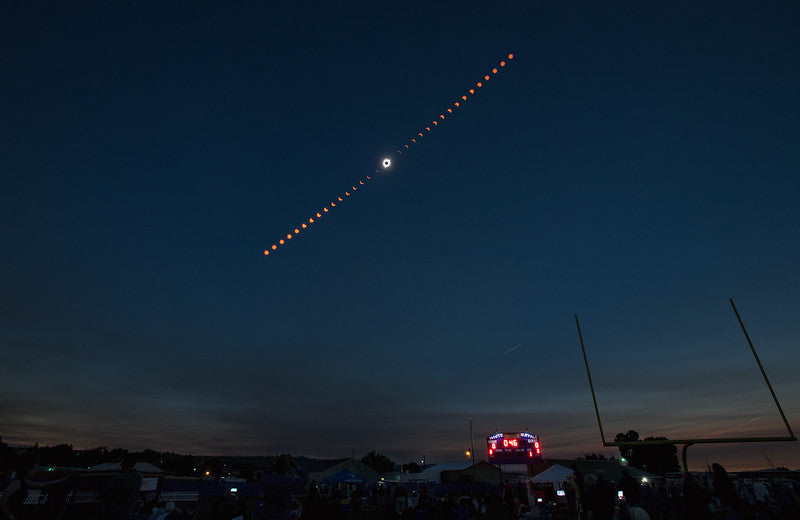Get Ready for These Upcoming Eclipses in the United States!
October 14, 2023, Solar Eclipse
Type: Annular Solar Eclipse
Safety
What to Expect

Since the Moon appears smaller than the Sun during an annular solar eclipse, the Sun peeks out from around the Moon. Credits: Stefan Seip
Where & When
On Oct. 14, 2023, the annular eclipse will begin in the United States, traveling from the coast of Oregon to the Texas Gulf Coast. Weather permitting, the annular eclipse will be visible in Oregon, Nevada, Utah, New Mexico, and Texas, as well as some parts of California, Idaho, Colorado, and Arizona.
The annular eclipse will continue on to Central America, passing over Mexico, Belize, Honduras, and Panama. In South America, the eclipse will travel through Colombia before ending off the coast of Natal, Brazil, in the Atlantic Ocean.
April 8, 2024, Solar Eclipse
Type: Total Solar Eclipse
Quick Facts
After the total solar eclipse on April 8, 2024, the next total solar eclipse that can be seen from the contiguous United States will be on Aug, 23, 2044
Safety
Except during the brief total phase of a total solar eclipse, when the Moon completely blocks the Sun’s bright face, it is not safe to look directly at the Sun without specialized eye protection for solar viewing. Viewing any part of the bright Sun through a camera lens, binoculars, or a telescope without a special-purpose solar filter secured over the front of the optics will instantly cause severe eye injury.
When watching the partial phases of the solar eclipse directly with your eyes, which happens before and after totality, you must look through safe solar viewing glasses (“eclipse glasses”) or a safe handheld solar viewer at all times. You can also use an indirect viewing method, such as a pinhole projector.
What to Expect
The April 8, 2024, eclipse will be a total solar eclipse. It will be the last total solar eclipse visible from the contiguous United States until 2044.
A total solar eclipse happens when the Moon passes between the Sun and Earth, completely blocking the face of the Sun. People viewing the eclipse from locations where the Moon’s shadow completely covers the Sun – known as the path of totality – will experience a total solar eclipse. The sky will darken, as if it were dawn or dusk. Weather permitting, people along the path of totality will see the Sun’s corona, or outer atmosphere, which is usually obscured by the bright face of the Sun.

This composite image shows the progression of a total solar eclipse over Madras, Oregon, on Monday, Aug. 21, 2017. Credit: NASA/Aubrey Gemignani
Where & When
The April 8, 2024, total solar eclipse will begin over the South Pacific Ocean and will cross North America, passing over Mexico, United States, and Canada. Weather permitting, the first location in continental North America that will experience totality is Mexico’s Pacific coast at around 11:07 a.m. PDT.
The path of the eclipse continues from Mexico, entering the United States in Texas, and traveling through Oklahoma, Arkansas, Missouri, Illinois, Kentucky, Indiana, Ohio, Pennsylvania, New York, Vermont, New Hampshire, and Maine. The eclipse will enter Canada in Southern Ontario, and continue through Quebec, New Brunswick, Prince Edward Island, and Nova Scotia. The eclipse will exit continental North America on the Atlantic coast of Newfoundland, Canada, at 5:16 p.m. NDT.

This table provides the time that the eclipse begins in a city in each state in the United States in the path of the annular eclipse. These areas will also experience a partial eclipse before and after these times.
